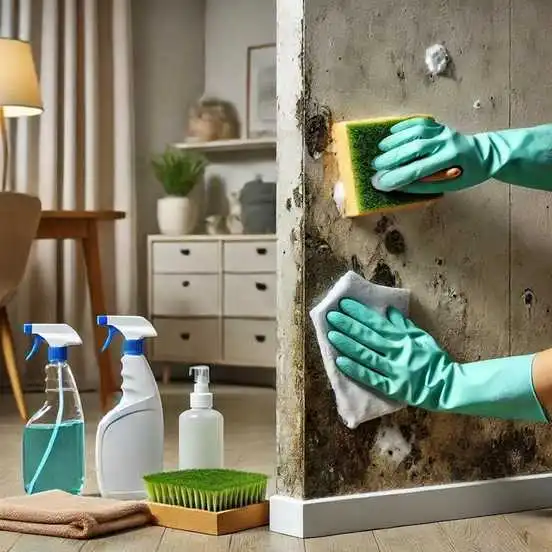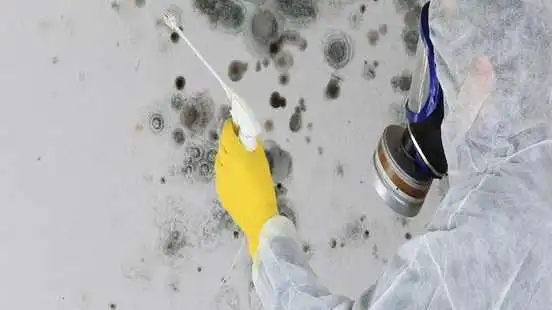Discovering mold in your home can be alarming, as it often raises concerns about air quality, potential health issues, and even structural damage to your property. But don’t despair! Addressing mold promptly and correctly is crucial, and for many common infestations, it’s a job you can tackle yourself. This guide will walk you through effective mold cleaning & removal techniques, providing a step-by-step approach for a cleaner, healthier living space.
Applying Effective Mold Cleaning & Removal Techniques
These 4 effective mold cleaning & removal solutions are best suited for small to moderate mold growth on hard, non-porous surfaces. Forget harsh chemicals that might only bleach the surface. For effective mold removal, you need solutions that kill the mold at its roots.

Before you start scrubbing, take a moment to prepare the area. Remove any items from the affected space. If furniture or belongings were in contact with the mold, take them outside if possible, and clean them separately. Lay down old sheets or plastic tarps to protect surrounding flooring or furniture from mold spores and cleaning solutions. These effective mold cleaning & removal techniques include:
- White Vinegar: An excellent natural mold killer. Vinegar is mildly acidic and can kill about 82% of mold species.
- How to Use: Pour undiluted white vinegar into a spray bottle. Spray directly onto the moldy surface and let it sit for at least an hour. Do not rinse immediately this allows the vinegar’s mild acidity time to penetrate and break down the mold’s structure.
- Hydrogen Peroxide (3% solution): A strong antifungal, antiviral, and antibacterial solution.
- How to Use: Spray or pour 3% hydrogen peroxide directly onto the mold. Let it sit for 10-15 minutes; this allows the peroxide to fully penetrate and kill the mold. Afterward, you can scrub the surface to remove the mold and then wipe it clean.
- Baking Soda: A natural deodorizer and mild abrasive.
- How to Use: Mix a quarter teaspoon of baking soda with water in a spray bottle. Shake well. Spray on the mold and scrub with a brush. This is great for maintenance after stronger treatments or for mildew.
- Dish Soap/Detergent: Effective for surface cleaning after initial mold killing.
- How to Use: Mix with water to create a soapy solution for scrubbing.
Cleaning specific surfaces
The best approach often depends on the material affected by mold.

- Hard, Non-Porous Surfaces (Tiles, Glass, Sealed Countertops): These are the easiest. Spray with vinegar or hydrogen peroxide, let sit, scrub, and wipe clean. These surfaces don’t absorb mold spores deeply.
- Porous Surfaces (Drywall, Unfinished Wood, Fabric, Insulation): Mold often penetrates these materials deeply, making complete DIY removal difficult or impossible. If the mold has deeply embedded itself or caused structural damage, these materials usually need to be removed and replaced to ensure the mold is gone.
- Carpet and Upholstery: Small, superficial mold on fabrics can sometimes be spot-cleaned with specialized fabric mold removers or a very diluted hydrogen peroxide solution, followed by thorough drying. However, if mold has penetrated the padding or backing, replacement is typically the safest option.
Preventing Mold Recurrence
Cleaning mold is only half the battle. An effective mold cleaning & removal technique involves preventing it from coming back.
- Control Moisture: Fix any leaks promptly (pipes, roofs, windows). Ensure proper drainage away from your home’s foundation.
- Manage Humidity: Keep indoor humidity levels below 60% (ideally 30-50%). Use dehumidifiers in damp areas like basements and bathrooms, especially in humid climates.
- Ensure Proper Ventilation: Use exhaust fans in bathrooms and kitchens during and after showering/cooking. Open windows when weather permits.
- Thoroughly Dry Affected Areas After Water Events: If you have a spill or leak, it’s crucial to dry the affected area and any porous materials (like carpets, drywall, or wood) completely within 24-48 hours to prevent mold growth.
- Regular Cleaning and Inspection: Periodically check known problem areas for signs of moisture or new mold growth.
Conclusion
Tackling mold in your home is a critical step towards maintaining a healthy environment. By understanding the basics of mold, prioritizing safety, and applying effective mold cleaning & removal techniques, you can successfully manage smaller infestations. Remember, the ultimate goal is not just to clean the mold, but to eliminate its source of moisture and prevent it from returning. With diligent effort and knowing when to call in the experts, you can ensure your home remains a clean, safe, and comfortable home.









